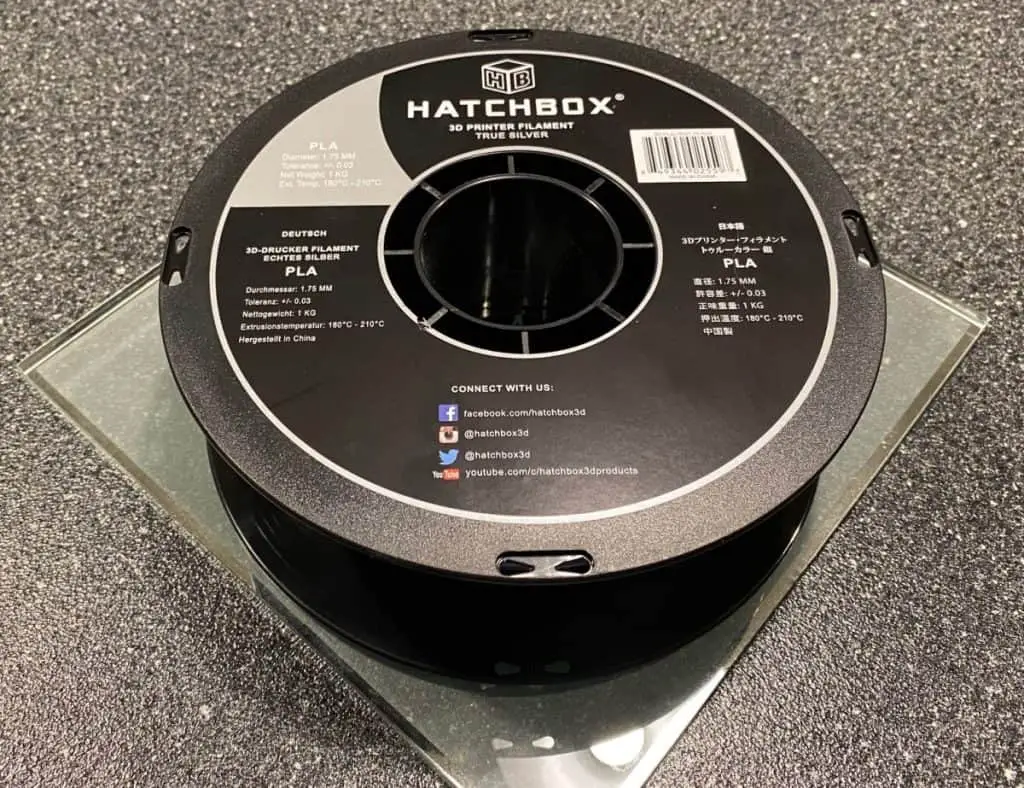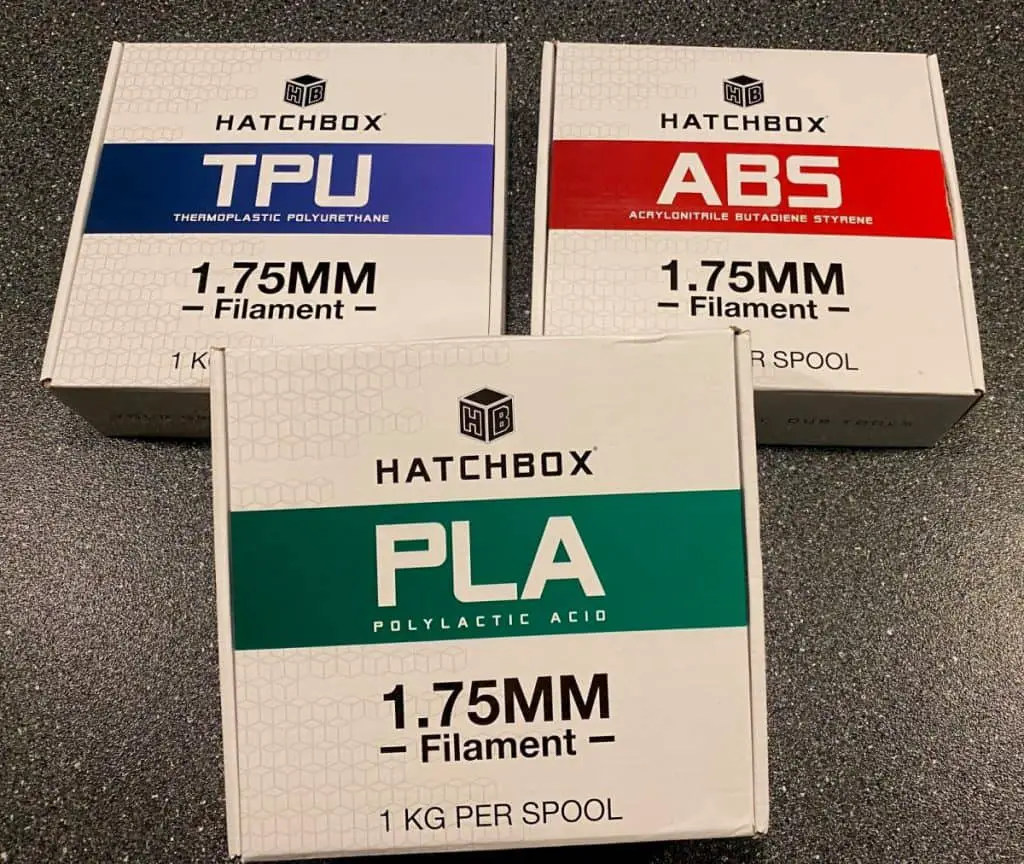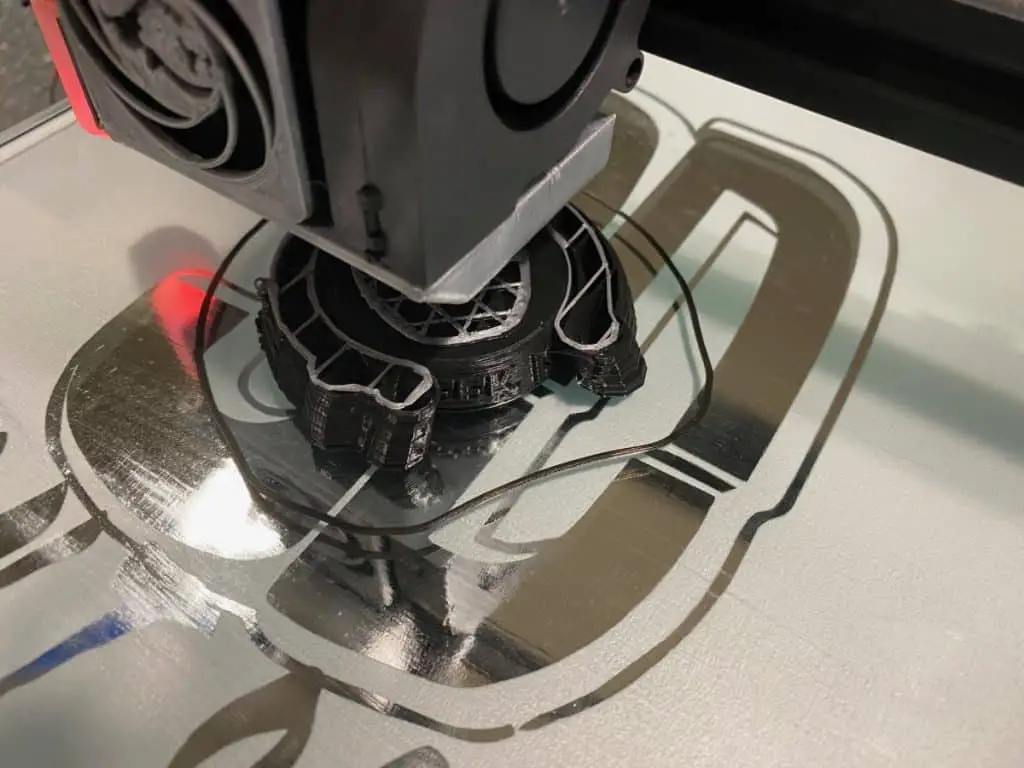Melting plastic produces fumes, and the filament used in 3D printing is a type of plastic. Plastic fumes are generally believed to be toxic and have various negative health effects. So, in this article, I thought I’d explain whether it’s safe to 3D print indoors.
It’s safe to 3D print indoors with most filament types, however, it’s always best to ensure the room that you’re printing in is well ventilated. If the filament is heated a bit too hot it produces very strong-smelling fumes that give most people a headache.
If your 3D printer is set to the perfect temperature for the filament you’re using, it will produce next to no fumes. 3D printers are designed to be used inside. But, as you may be aware, there is always a risk of fire when using a 3D printer. With that said it’s quite unlikely to happen.
In this article, I will explain whether the fumes produced when 3D printing are dangerous if it’s safe to 3D print in a bedroom and whether printing PLA indoors is safe.

Is It Safe To Have a 3D Printer in Your Room?
A bedroom is a convenient place to keep a 3D printer, and not everyone has a good space where you can spend long hours working on 3D prints, and tinkering with a 3D printer. But, is it OK to have a 3D printer in your room.
It’s safe to have a 3D printer in your room. The main safety concerns are fumes and the risk of fire. To reduce the risk of fumes or fire, always have some ventilation such as an open window, or use an extruder fan system. Also, never leave your 3D printer on unattended.
Ideally, a 3D printer won’t produce fumes. This is caused by the filament being heated too hot. Because a 3D printer will still print really well when the filament is heated too hot, you may accidentally heat the filament too hot which will produce strong-smelling fumes. The fumes also tend to give most people a headache.
For this reason, it’s always a good idea to have a window open. But, if it’s wintertime and it’s very cold outside this is often quite inconvenient and uncomfortable. So, you can install an extruder fan system that sucks the air through a pipe and blows it outside. This can be a bit of an undertaking depending on the layout of your house or room.
Here’s a really good video that shows how to create a simple enclosed ventilation set up for a 3D printer:
I did some research and compiled some data about people who find that 3D printing fumes are an issue compared to those who find it isn’t an issue. Here’s a table that shows the results:
| Do 3D printing fumes bother you? | Votes | Percentage of total votes (%) |
|---|---|---|
| Yes, they are an issue. | 15 | 68.2% |
| No, they have never caused an issue | 7 | 31.8% |
From the data, you can see that around two-thirds of people said that they have an issue with the 3D printing fumes. And only one-third of people find it isn’t an issue at all. Many people that responded said that it’s a particular type of filament that causes the issue. Some people said ABS filament causes them issues with the fumes. Whereas, others say that PLA causes them issues.
Types of filament that have bad fumes
People that commented said that PLA causes bad fumes, whereas, others said PLA is perfectly fine and has a pleasant sweet smell. The same was also true of other types of filament, because of that if you do have issues with the effects of the fumes for a certain filament it’s a good idea to try a different kind of filament to see if it doesn’t cause you any issues.
The main filament to that you should not print with indoors unless you have your 3d printer properly vented is ABS (Acrylonitrile butadiene styrene). ABS fumes can be very dangerous and are considered toxic. If you are looking for the extra strength ABS provides, I recommend you look at PETG filament.
Most people keep their homes and rooms well ventilated because it’s more comfortable. Many homes also have an air filtration system built into their HVAC/air conditioning system. So, generally, any fumes will be taken away by the flowing air.
Key takeaways:
- Don’t print in an airtight room with no airflow at all.
- If you get negative effects such as a headache or a sore throat try a different filament type, or provide the room with more airflow.
- Don’t use ABS filament unless you have proper ventalation.

Is It Safe to 3D Print PLA Indoors?
There are a range of different filament types and one of the most used is PLA. But, how much ventilation do you need to print PLA, and how safe is it to print PLA indoors.
Printing PLA indoors is perfectly safe provided the area is well ventilated. The owner’s manual for the Ender 3 – a very popular 3D printer says never to print in an area that has no ventilation because the filament produces noxious gasses which are harmful.
Some people experience negative effects such as headaches, a sore throat, or a runny nose from 3D printer fumes, whereas, others are unaffected at all. Although you may not experience any acute effects – those that you experience immediately – it’s best to follow the recommendation from 3D printer manufacturers like Creality who recommend never operating it in an area without ventilation. That way any fumes will be dispersed and won’t concentrate in an area over time.
Are 3D Printing Fumes Dangerous?
3D printers melt filament, and as it melts it gives off fumes. Sometimes these fumes have no smell, whereas, others produce a very strong odor. So, are 3D printing fumes dangerous?
3D printing fumes are dangerous. You should never operate a 3D printer in an area that has no ventilation according to the Creality Ender 3 owners manual. In an unventilated room, the fumes become concentrated, whereas in a ventilated room they get dispersed and have little or no effect.
It’s also the case that some filaments produce a strong chemical smell that is quite unpleasant. On the other hand, some produce a sweet pleasant smell. Some people are also more sensitive to 3D print fumes than others.
If this is the case for you or anyone in your household then you should have more ventilation when using your 3D printer to dilute the fumes produced when 3D printing.

Related Articles
- Does PETG 3D Printing Create Toxic Fumes?
- All About 3D Printer Plastic
- Can You Drill Into and Cut 3D Printed Plastic?
- Does PLA Need to Be Kept Dry?
- Best PLA Glue – The Answer Inside!
- Can I Dry Filament in Microwave? (Details Inside)
Make sure you check out our YouTube channel, and if you would like any additional details or have any questions, please leave a comment below or join us on Discord. If you liked this article and want to read others click here.
